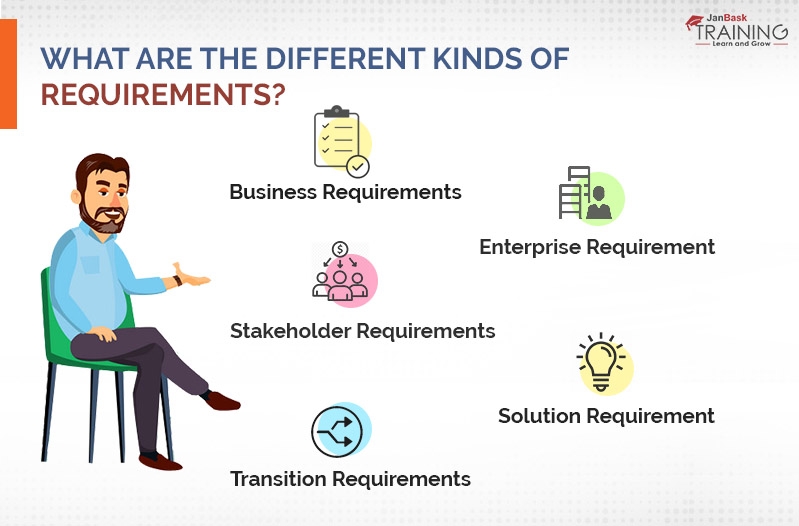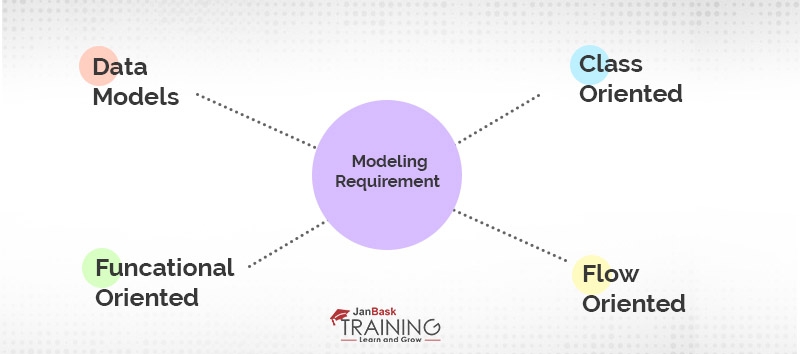25
JulInternational Womens Day : Flat 30% off on live classes + 2 free self-paced courses - SCHEDULE CALL
The moment we hear requirements, we visualize some features, application or any product, Isn’t that true? So, let’s get deeper into it and understand it in a more structured way with all its related processes.
Requirements are the first level of documented details of any future product. Their importance increases the moment they are communicated in a written manner. They are famous as they form the basis of any software development. Requirements have multiple other attributes attached to it, so as to get a successful end result. A deep dive into the requirement process would guide us better during the entire software development cycle.
In this blog, we will understand why the requirements are important. You will get an idea of how to keep improvising your requirements to build a quality product. Some of the specific details which would look at are -
In simple terms, requirements are specific details for product development. It can be termed as a business need or wants. For software development, requirements are always in a written format.
Requirements should always have strong business reasoning behind it. It helps to design future product capability. It needs deep analysis to come up with an exact requirement.
Mostly it comes in a document named as - Business Requirement Documentation. It starts with a very high-level agenda. As in when requirements reach to various teams, it takes much granular approach.
In current practice, it is captured in JIRA in the format of User-Stories. The storytelling format helps everyone to understand it better.
Example -
Context - An eCommerce website
Requirement - Build the system smart enough to suggest products as per browsing history.
Learning Requirement Attributes as in Software Development
Any software development runs with a strong requirement behind it. That’s why it becomes very important to understand its attributes. Let’s take a look to gain some insight into requirement attributes.
Attributes are properties of a requirement. They carry additional important information on a requirement. They are a critical aspect for successful development. Attributes help to capture each and every dependency making project management task flexible. Thus, it helps to facilitate easy follow-ups with stakeholders.
They form building blocks to meet several important conditions. Thus making a good and detailed requirement.

Being in IT we all understand how important it is to have proper requirements. Can you imagine developing a feature without any requirement? Wouldn’t that be unrealistic to do?
So let’s see why and how are requirements are an important aspect of IT projects.
Requirements are important as they are the building blocks of any project. They lay a strong foundation for the following -
Requirements are conditions which help stakeholders to solve a particular problem. They actually explain the functionality of the product so that no one is clueless about their tasks.
Read: How To Make Your Product Stand Out With Process Flow Diagram?
It helps to keep business analyst, project manager, developer and tester to be on the same page. With Agile so much into the market, its importance is increasing day by day.
Requirements help to build something valuable as they are directly proportional to the end result. When a requirement is developed into full-fledged functionality, it helps to map both.
Do you know why client meetings are important in this aspect?
Requirements are crucial during the initiation of the project. They should be scalable and should have all the required features. It is one of the most important documents for the following stakeholders -
Software requirements can be of multiple types. This is based on their needs and business outcomes. Let’s take a closer look at each one of them.
 Business Requirements -
Business Requirements - Business requirements are the demands of the business. It is totally linked with the organization’s business benefits. It shows the details of what the end customer is expecting out of the product.
It sees the product from the viewpoint of the end customer.
Afterall organizations work for business goals. Business Requirements are always at a high level. They need to be understood and broken down.
These requirements are usually captured in a document called - BRD. The prime focus of BRD is -
Enterprise requirements are designed from organization’s view. It focuses on scalability, performance, market competition, software, and hardware.
Any organization needs to have a strong IT infrastructure to grow. These might come up demands from various business functions. These usually happen when a business unit is facing some issues. Mostly they are self-identified requirements.
They have a strong analytics team also behind them.
To make it simpler, let's take an example -
A company has a rules engine to support its business rules. But it is facing issues with performance. On deep-dive analysis, it is figured out that technology changes need to be implemented. So this becomes an Enterprise requirement as the software needs to be upgraded. Market research needs to be done. It should be compatible with existing hardware in the organization. It needs a huge analysis so that it does not impact other modules and business functions.
Stakeholder requirements are a visualization of the needs and wants of stakeholders. We always hear the demands of stakeholders which are nothing but their specific requirements. These requirements are mostly derived from business requirements.
If we consider the above example, one stakeholder might demand to have the feature ready for the website first. While others would demand for the app first.
There could be other stakeholders who have other demands for same business requirement.
Stakeholders can be an individual or any business unit. They are one step higher than the solution requirement.
Solution requirements are requirements that list out business capabilities. They help to build a business solution. The major focus is on finding the solution.
Read: All You Need to Know About Business Analyst Qualification
But the important part is -
“It needs to be aligned with Business and Stakeholder Requirements.”
It is commonly seen people like to jump to a solution. In that case, it can create problems. It takes time to finalize solution requirements.
Two Types of Solution Requirement -
Functional requirement focuses on behavior and quality of product.
Example - An eCommerce website should have proper categories for each product.
Non-Functional requirement focuses on reliability and performance.
Example - The response time to fetch each product on the website should be very quick.
Transition requirements are capabilities that an IT system must possess to run successfully in the real world. They are of utter importance because they are mostly done for existing customers. These are always on high priority and they need immediate solutions.
In other words, they are implementation and change requirements. They directly hit the production system.
These requirements have huge dependencies on Development and Operations along with Customer Service. To achieve efficiency transition requirements are being analyzed. They need an accurate plan of action.
Requirement Engineering and Management as abbreviated as REAM is a combination of technology and managerial skills. Many times, projects are not successful because of these two factors not being aligned. Both of these have a huge impact on the requirement analysis.

Requirement engineering refers to the following -
Requirement Management refers to the following -
They should be seen as a bundle or package. They both go hand in hand. It can also be said that requirement management is sub-function of requirement engineering. Both need to focus on the demands of end customers. They can be also viewed as verticals and horizontals.
Now we have quite a bit understanding of requirements. Lets now see some of the important processes in software development.
Mapping requirement means the relation of one requirement to multiple projects.
Thus, mapping of requirement is very important as it helps to check on the impacts of other modules as well. The original requirement should always be linked to the dependent module. It can be seen as a tree or a hierarchy.
Read: What is Comparative Analysis: Importance, Examples and Tips
Such requirements can be also termed as a global requirement in an organization. They are aligned in the context of organizations’ processes to meet up certain business goals. Mapping requirement increases test cases for better quality.
The modeling requirement refers to the document from the end-user view. It holds heavy dependencies on software and hardware capability. It identifies what a software application needs to hold to satisfy end customers. The modeling requirement needs to be approved by the organization.
It sets the platform for various business simulation. It uses combinations of text and visuals to make it easy to understand. It has a wide range of dimensions. But then all should satisfy the end customer.

Traceability Matrix is a document that maps and traces requirements with test scenarios. It captures all requirements by the client and maps it with test cases. It is an important step in software testing. It checks each requirement with test cases.
This ensures that no functionality has been missed. This is the document which helps to pass the functional testing and also to keep the track of current project status.
It is prepared in the form of tables where the column captures the requirement and rows captures the test cases.
The relationship between them is being marked. The value in between them maps the relation of two items. It is the baseline document between requirements and functionality.
Tracking
Tracking of requirements can be said to be keeping an eye on the movement of requirements. This process helps to manage the requirement better.
The most trending method to track the requirement is JIRA and Confluence.
JIRA is a very powerful tool to track all requirements. It tracks when any requirement when under any change. The reason any requirement is modified. It has multiple flows like - open, resolved, holds, done, implementation complete.
It also captures the test cases. It can be directly linked to Confluence. Thus, makes it easier to maintain it. This has the facility to capture history as well.
Conclusion
I hope now you would a much-structured idea of requirements. Or else, if you already had it would have helped to map it to various experiences and understand them better.
Thus, the requirement process is very important for the success of any project. A proper and guided requirement is directly proportional to the success of the project. The specification details and structured format helps to drive the software development cycle efficiently. With that, I would like to quote the words of Louis Sruggley -
“Without requirements or design, programming is the art of adding bugs to an empty text file.”
 Pinterest
Pinterest
 Email
Email
I believe in knowledge sharing and bringing change in people's lives. As a business analyst by profession, I love to explore everything about the way businesses should drive. I keep in touch with the latest business analysis updates.

Cyber Security

QA

Salesforce

Business Analyst

MS SQL Server

Data Science

DevOps

Hadoop

Python

Artificial Intelligence

Machine Learning

Tableau
Search Posts
Related Posts
Receive Latest Materials and Offers on Business Analyst Course
Interviews